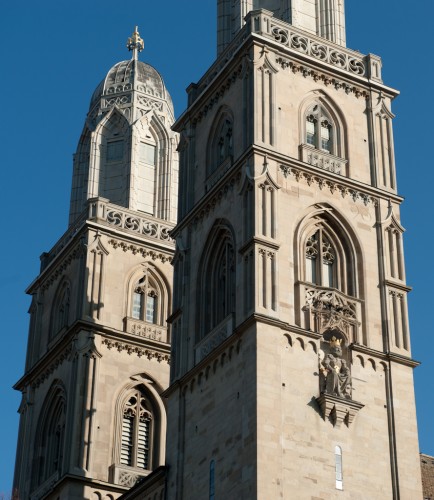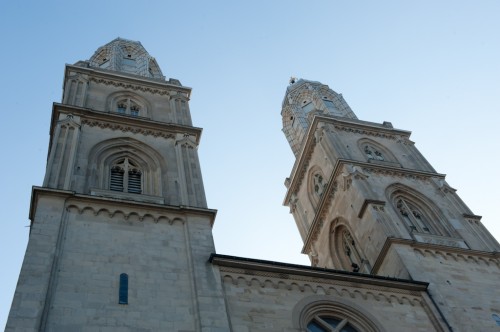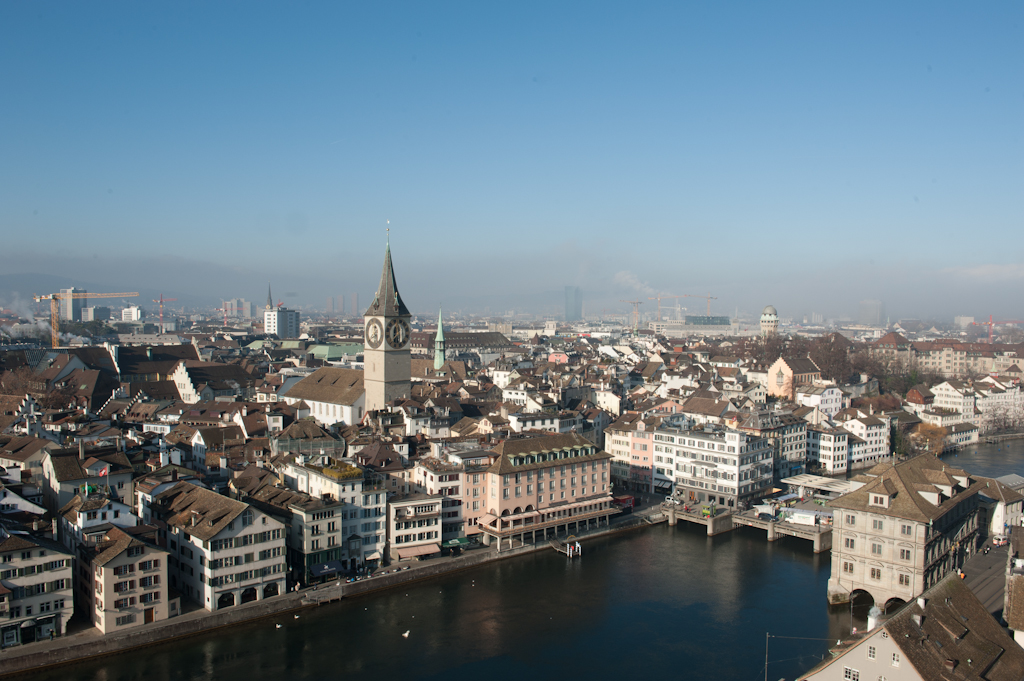In a city of churches, this one dominates the skyline. It’s fitting, since this church was the birthplace of the Swiss-German Reformation.
In the 16th century, the Grossmünster’s minister, Huldrych Zwingli, transformed Zürich into an important religious center by spreading his humanist ideas. Zwingli based his philosophy on that of Erasmus, and eventually began rebelling against the Catholic Church. Amazingly, his congregation listened and embraced his principles. The Catholic Church caught wind of this rebellion and paid Zwingli a visit. Even more amazingly, the papal representatives ended up returning to Rome in defeat. Zwingli’s ideas spread throughout Switzerland, and voilà, Reformation was born.
After Zwingli’s death in 1531, Jean Calvin assumed the role (after a short-lived stint by Zwingli’s son-in-law) of pushing reform and ultimately developed his own doctrine, Calvinism.
Although the Grossmünster was constructed between 1100-1280, Charlemagne founded it in the ninth century. The church sits on what is believed to be a Roman cemetery. Initially, the north tower was higher than the south since it held the bells. In the 15th century, the south tower was increased in height. In 1763, a fire ruined the spires and upper towers and the reconstruction added the belfries, watchrooms and cupolae.
The interior is sparse since all the altar paintings and decorative elements were removed in the 16th century (Zwingli, remember?). And the stained glass windows are brand-spanking-new; they look like they were made by five different artists, but they were all created by Augusto Giacometti in 1933.
Climb the 62-meter south tower for a panoramic city view.



No comments yet.